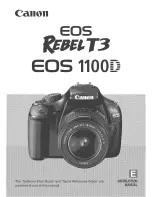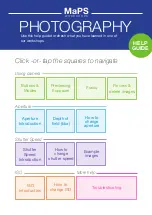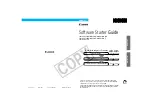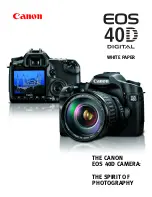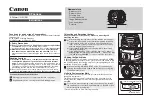
V. SHARPENING METHODS IN POST-PROCESSING
30
Adobe Photoshop’s
Unsharp Mask Filter
If little or no in-camera sharpening has been applied prior to viewing an EOS-1 class
Digital SLR image at 100% magnification, especially with the EOS-1D Mark II, most
photographers will agree that the image looks soft, even if it has been properly focused
and exposed. This is mostly due to the detail-softening effect of the camera’s
anti-aliasing (AA) filter, which is permanently mounted in front of the image sensor. The
AA filter plays an important role in reducing or eliminating false colors and moiré, but
the trade-off is that images must be sharpened either in the camera or in the computer
prior to final usage.
There are dozens of sharpening techniques, but the Unsharp Mask filter in Adobe
®
Photoshop
®
is one of the best-known methods. Some photographers prefer to sharpen
only once prior to printing. Others apply Unsharp Mask twice: once to eliminate the
softening effect of the camera's AA filter prior to editing for contrast and color balance,
and again to compensate for the softening effects of various output methods prior to
printing.
Also, many skilled photographers don’t sharpen the entire image in post-processing.
Rather, they apply sharpness only to appropriate areas. For example, they might
sharpen the foreground in a landscape photograph and not sharpen the sky. This
selective sharpening technique is easily accomplished with layers or masks.
Unsharp Mask offers 3 settings: Amount, Radius and Threshold. Radius and Threshold
determine which pixels and which areas around them are affected by the Amount
adjustment. As Adobe says, “The effects of the Unsharp Mask filter are more
pronounced on-screen than in high-resolution output. If your final destination is print,
experiment to determine which settings work best for your image.” The difference is
attributed to the screen’s resolution being different from the printer’s resolution.
If you haven’t worked with Unsharp Mask, try the following settings as a very rough
guideline for high quality inkjet printed output at A4 or Letter size:
Amount: 300%
Radius: 0.3 pixels
Threshold: 0 pixels
You’ll find that small adjustments to Radius and Threshold have a much stronger effect
than small adjustments to Amount. Also, sharpness preferences vary according to
subject matter (human subjects often look better with less sharpening, whereas
V. SHARPENING METHODS IN
POST-PROCESSING





















